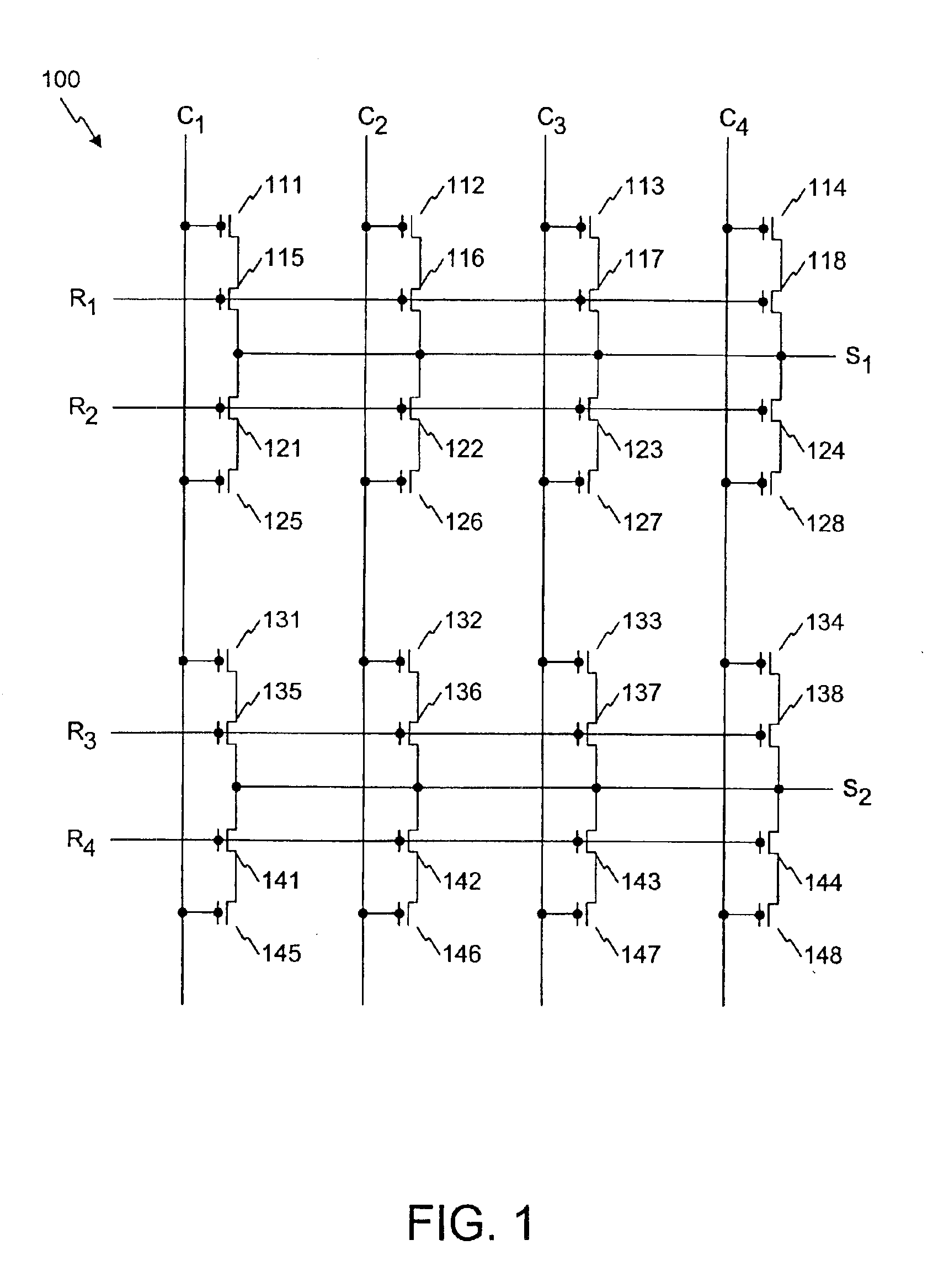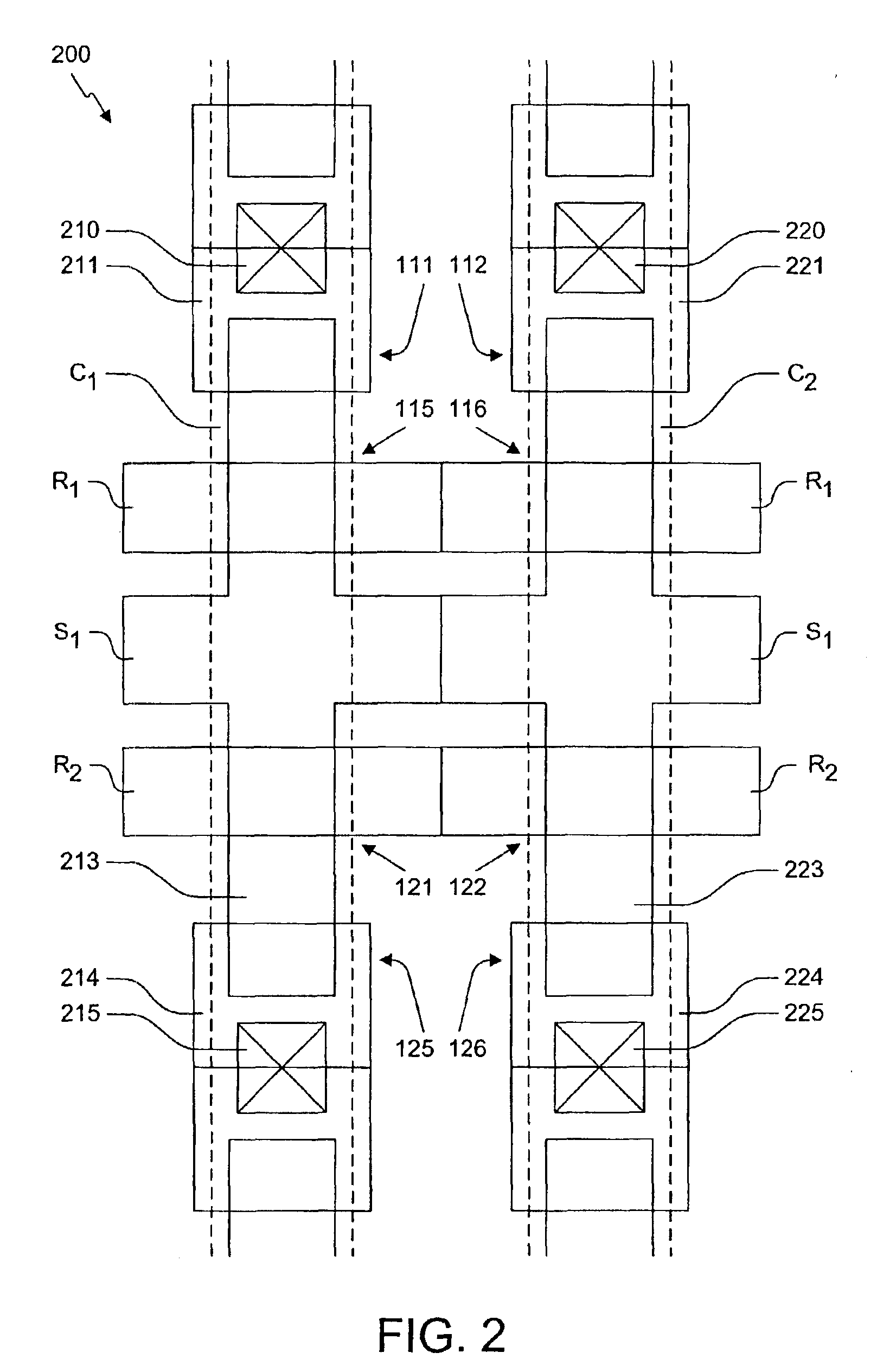Reprogrammable non-volatile memory using a breakdown phenomena in an ultra-thin dielectric
- Summary
- Abstract
- Description
- Claims
- Application Information
AI Technical Summary
Problems solved by technology
Method used
Image
Examples
Embodiment Construction
[0026]The present invention is a reprogrammable non-volatile memory cell and memory array. The non-volatile memory is comprised of semiconductor memory cells having a data storage element constructed around an ultra-thin dielectric, such as a gate oxide, used to store information by stressing the ultra-thin dielectric into breakdown (soft or hard breakdown) to set the leakage current level of the memory cell. The memory cell is read by sensing the current drawn by the cell. A suitable ultra-thin dielectric is, for example, high quality gate oxide of about 50 Å thickness or less, as is commonly available from presently available advanced CMOS logic processes, for example. Such oxides are commonly formed by deposition, by oxide growth from a silicon active region, or by some combination thereof. Other suitable dielectrics include oxide-nitride-oxide composites, compound oxides, and so forth.
[0027]The memory cells are reprogrammable by increasing the magnitude of dielectric breakdown f...
PUM
 Login to View More
Login to View More Abstract
Description
Claims
Application Information
 Login to View More
Login to View More - R&D
- Intellectual Property
- Life Sciences
- Materials
- Tech Scout
- Unparalleled Data Quality
- Higher Quality Content
- 60% Fewer Hallucinations
Browse by: Latest US Patents, China's latest patents, Technical Efficacy Thesaurus, Application Domain, Technology Topic, Popular Technical Reports.
© 2025 PatSnap. All rights reserved.Legal|Privacy policy|Modern Slavery Act Transparency Statement|Sitemap|About US| Contact US: help@patsnap.com



